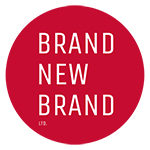A call-to-action (CTA) is an advertising Prompt that encourages an internet user to take a specific action. A CTA can be used in email marketing, online advertising, social media posts, and even physical advertisements. CTAs are usuallyAction written as brief commands or questions that urge the reader to do something specific, such as „Buy now” or „Find out more.”
You will find out from our blog post
1. What is a call-to-action (CTA)?
2. When should you use a CTA on your website or blog post?
3. Where should you place your CTA on your website or blog post for the best results?
4. How do you create an effective CTA for your website or blog post?
5. Examples of effective CTAs
6. Tips for creating an effective CTA
Why Call-to-Action is so important
Did you know that without a call-to-action, your blog post or your advertisement ad may not result in the action you desire? That’s because a call-to-action is an essential element of any successful blog post. In this post, we’ll discuss why call-to-action is so important and how to create effective calls-to-action for your readers. Stay tuned!
Why Use a Call-to-Action?
The purpose of using a CTA is to encourage your audience to take a desired action. This could be anything from visiting your website to making a purchase. By including a CTA, you can help guide your readers towards becoming paying customers or clients.
How to Use a Call-to-Action
There are several things you should keep in mind when crafting your own CTAs. First and foremost, your CTA should be clear and concise. It should be easy for the reader to understand what you want them to do. Secondly, your CTA should be relevant to the product or service you’re promoting. For example, if you’re selling shoes, your CTA might be „Buy Now” or „Shop Now.” Finally, your CTA should be placed prominently on your website or advertisement so that it’s impossible to miss.
Creating an Effective Call-to-Action
A call-to-action, or CTA, is a key element of any good marketing or advertising campaign. An effective CTA will spur your audience to take the desired action, whether that’s making a purchase, signing up for a newsletter, or downloading a white paper. But what makes for an effective CTA?
There are three essential ingredients for any successful CTA: clarity, brevity, and resonance. Let’s break each of these down in turn.
Clarity
Your CTA should be clear and unambiguous. Your audience should know exactly what you want them to do. For example, „Download our free whitepaper” is clear and concise; „Check out our website” is not.
Brevity
Keep your CTA brief—one or two words is ideal. The longer your CTA, the less likely your audience is to actually take action. So make sure you’re getting straight to the point.
Resonance:
Your CTA should resonate with your audience. In other words, it should speak to their needs and desires. For example, if you’re targeting busy professionals, then an offer of „more free time” would likely resonate more than an offer of „a lower price.”
Remember, an effective call-to-action is clear, concise, and resonant. Keep these three essentials in mind when crafting your next CTA, and you’ll be sure to see an uptick in conversions.
Examples of Call-to-Action Buttons
Now that we’ve gone over what a CTA is and how to use one, let’s take a look at some real-world examples.
As you can see, call-to-actions serve an important purpose in advertising and marketing. By including a clear and concise CTA in your ad campaigns, you can increase the likelihood of getting potential customers to take your desired action. So what are you waiting for? Start using CTAs today!

